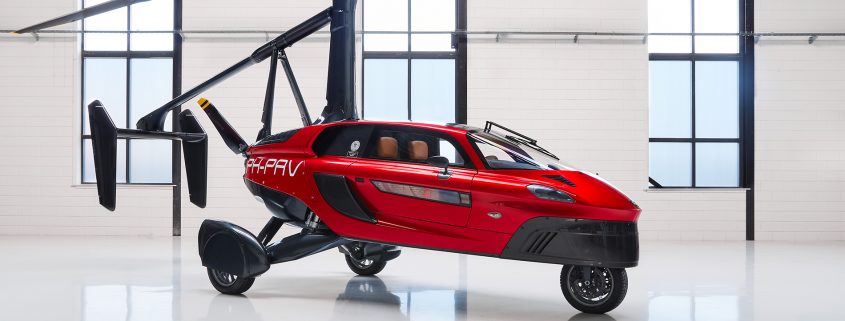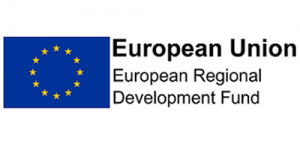At the recent Geneva Motor Show in Switzerland the PAL-V Liberty was unveiled to the public as the first Dutch-made flying car. The PAL-V is a ‘gyrocopter’, a flight-capable vehicle with retractable blades that doubles as a car. NLR was jointly responsible for designing the composite rotor blades and propeller, for developing the required manufacturing methods and for making the first products for flight tests.
The difference between a gyrocopter and a helicopter is that a gyrocopter’s blades are powered by wind instead of an engine. A push-propeller gives the vehicle forward thrust and thus the wind that makes the rotor turn. This immediately provides a safety advantage, because landing is also easily possible without an engine. The rotor then works as a parachute. This makes the PAL-V rotor system technically simpler than a helicopter, but it does need a ‘takeoff roll’ to get off the ground. You can also ‘spin up’ the rotor using a pre-rotator (electrically powered) so as to shorten the takeoff roll. This makes vertical takeoff another possibility.
The two-engine PAL-V Liberty can carry two people. On the road it has a top speed of 160 km/h and in the air 180 km/h. Its maximum flying altitude is 11,000 feet (3300 metres) and it has a range of 650 kilometres. Switching from ‘road mode’ to ‘air mode’ occurs partly manually during the pre-flight walk-around (inspection) and takes approximately ten minutes. Work is currently in progress to obtain certification from the European civil aviation authorities. The first PAL-V Liberty production series is expected to start in 2019 and will consist of 50 machines. Customers must hold a pilot’s licence and for the unique first series will have to pay approximately €500,000 per machine.
The PAL-V is a revolutionary personal transport concept that responds to the growing demand for individual and efficient medium-distance transport. It meets a need for low-threshold and combined road and air transport that is fast, safe and reliable. The PAL-V will therefore be focused on affluent business travellers, but also emergency services like the police and fire brigade. Electric or hybrid power systems are possible.
NLR’s contribution to this project reflects its strategy to offer solutions not only for challenges in the aerospace sector today and tomorrow, but also to develop and apply knowledge for future transport concepts and platforms.
This project has been subsidised by EU’s European Regional Development Fund-ERDF.





